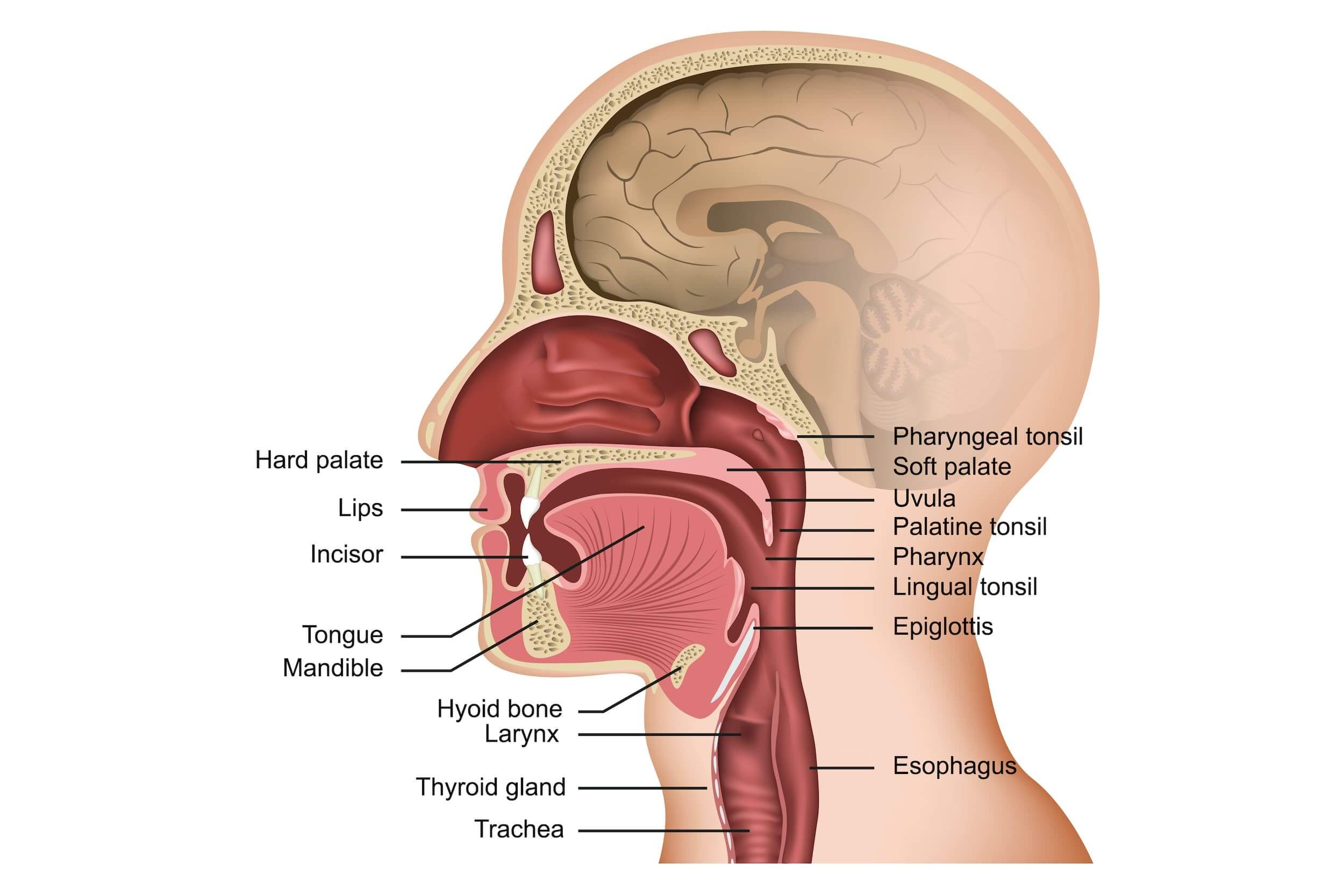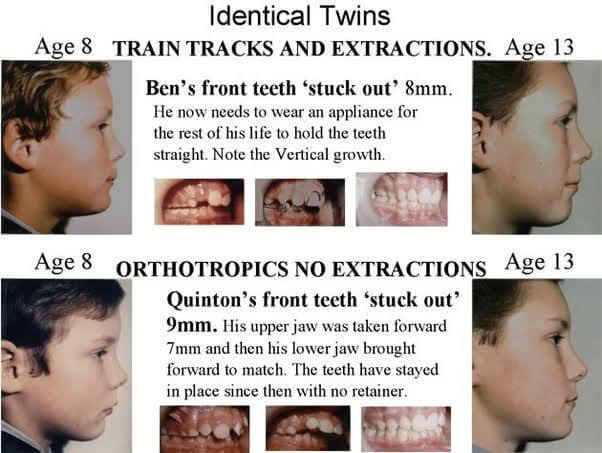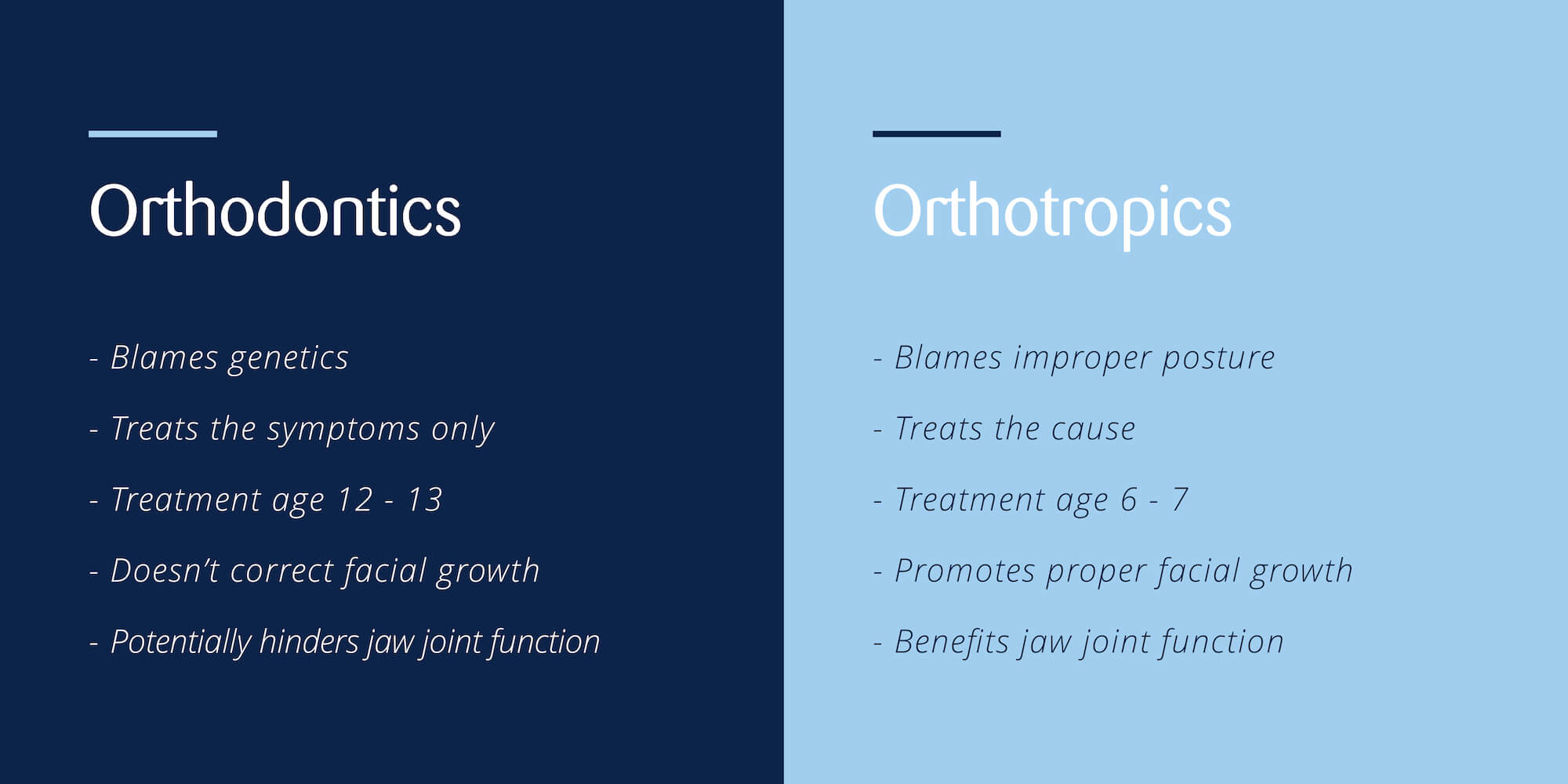Overbite: Understanding the Overbite and How to Correct it
What is an Overbite?
An overbite - also known as a class 2 division 1 malocclusion - is characterised by top teeth that are positioned
further forward in the face than the lower teeth. Essentially, the top teeth overlap the lower teeth.

The Issues Associated With an Overbite
While an overbite certainly results in a less attractive face and is often associated
with other aesthetic issues like crowding of the teeth, it also negatively affects the function of the mouth, jaw and airway. Thus, an
overbite can also contribute to many health concerns like reduced oxygen supply, snoring, sleep apnea and TMJ
dysfunction.
These conditions are also known to cause other health issues. For instance, TMJ dysfunction is known to cause headaches, head and neck pain
and referred nerve pain, while reduced oxygen supply is known to hinder the growth and development of children - both physically and
mentally. The point being; an overbite is not merely an aesthetic issue. If it is left untreated or not treated
properly, there can be severe health implications.
What Causes an Overbite?
Contrary to what many people believe, an overbite has less to do with the teeth than how the jaw grows and develops.
An overbite is symptomatic of unfavourable development of the jaws, whereby the lower jaw fails to grow properly - meaning it is positioned
further back in the face.
However, what causes this unfavourable development of the jaws is where many dentists and orthodontists diverge in
their thinking. Traditional dentists and orthodontists believe that an overbite is simply the product of genetics,
whereby for some genetic reason, the lower jaw has failed to grow to its potential. However, those who abide by orthotropics believe that
an overbite is the product of poor posture - specifically poor tongue
posture.
How Does Improper Tongue Posture Create an Overbite?
The idea that the tongue’s positioning can cause an overbite may seem strange at first; however, it’s
actually based on a very simple concept. When the tongue sits on the roof of the mouth, the mouth will remain
closed - ensuring the upper and lower jaws are in contact. When the jaws are in contact like this, they will typically grow forwards and
develop properly - ensuring a proper bite. However, when the tongue sits away from the roof of the mouth, the
mouth will hang open (try this yourself by opening your mouth). When the mouth is open like this, the jaw joints - especially the lower jaw
- are dragged down and backwards. Hanging the mouth open like this for extended periods will encourage the jaws to
grow downwards instead of forwards, ultimately resulting in an overbite.
Some of the habits that promote poor tongue posture and cause an overbite are:
- Mouth breathing
- Thumb sucking
- Excessive use of a dummy/pacifier

Tongue Posture: What is Proper Tongue Posture?
The tongue is the strongest muscle in the mouth. Its position in the mouth dictates how the face forms. How the face
forms dictates how the teeth sit within the face...
Read more

Mouth Breathing and How it Causes Malocclusion.
Mouth breathing hinders facial growth and development. How? Because when the mouth is open, it drags everything down and backwards...
Read more
Overbite Correction
There are two primary forms of overbite correction; orthodontics and orthotropics. Despite treating the same
condition, they employ almost polar opposite approaches. Traditional orthodontics treats overbites by bringing the top jaw back
to meet the bottom jaw. Orthotropics, on the other hand, looks to grow the bottom jaw forward to meet the top jaw.
While both orthodontics and orthotropics have the same objective - to bring the top and bottom jaws into alignment - they achieve very
different results, both aesthetically and functionally.
The Orthodontic Approach to Overbite Correction
Because they blame genetics, traditional orthodontists will typically wait until the child has finished growing
their adult teeth in (around the age of 12-13) before treating an overbite. They believe that there is nothing
they can do to correct an overbite before the child has finished growing.
Because they believe they have no control over the growth of the bottom jaw, the only way for them to create alignment between the top and bottom jaws is to pull the front teeth back with appliances like braces - perhaps even removing top teeth to create more room. As the jaws are positioned too far back in the face, the result is suboptimal, which flattens out the profile, cramps the jaw joints, and restricts the airway.
The Orthotropic Approach to Overbite Correction
Orthotropics, on the other hand, looks to commence overbite treatment at around 6/7 years of age. This is because
the younger the patent, the more malleable their habits and facial growth are. Unlike orthodontics, the intention is to encourage the
bottom jaw to grow forwards so that it can meet the top jaw. Growing the face forward in this manner is better
both aesthetically and functionally.
It creates a more defined jawline and thicker lips, improves jaw joint function (reducing the risk of TMJ dysfunction in the future),
alleviates the need for tooth extractions and creates more room for the airway (promoting oxygen supply).
In essence, orthotropics treats the cause of an overbite - not merely the symptoms of an overbite like
orthodontics does. When it comes to overbite correction, we believe that orthotropic treatment is far superior to
orthodontic treatment.
Overbite Before and After
The best way to understand the benefits of treating an overbite with orthotropics instead of orthodontics is to look at some before and after images of patients. Dr John Mew, who created Orthotropics, is renowned for treating identical twins - one with orthodontics and one with orthotropics - to compare the differences. The results speak for themselves…




